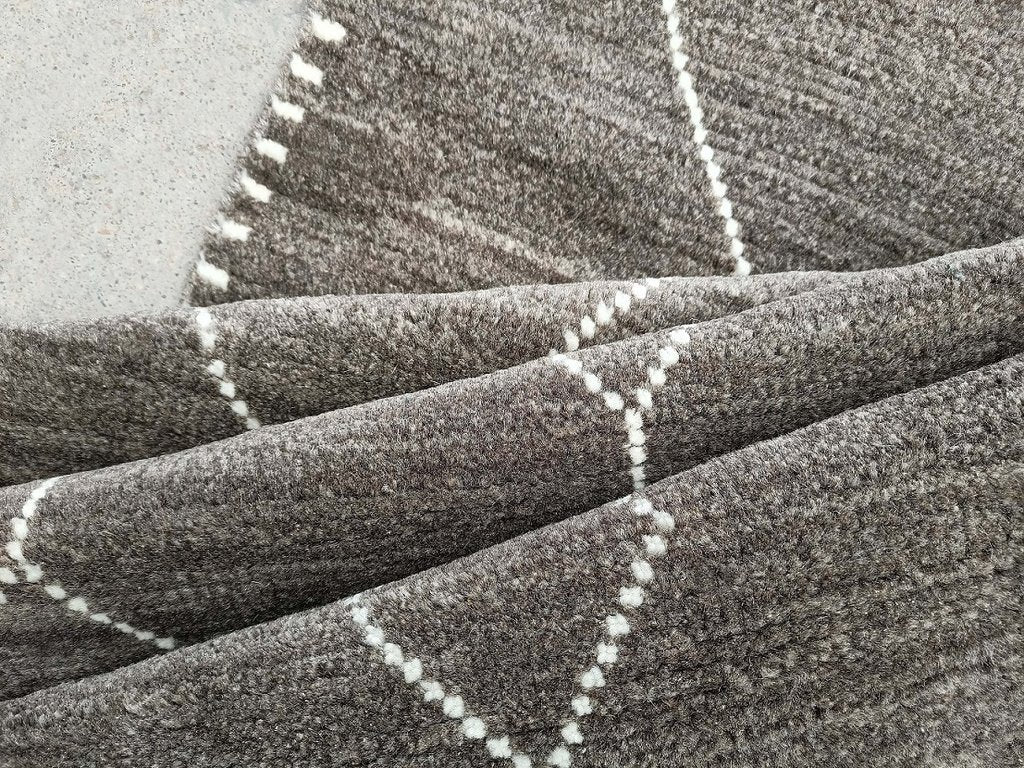A Closer Look at Moroccan Rugs: Authentic Rugs VS Replicated Rugs
In earlier times, Moroccan rugs were already being made—but it was only during the twentieth century where the rest of the world found out about them.
The Berber and Arab tribes of Morocco who brought the rugs to life did not rely on outside inspiration to create such fascinating pieces, focusing only on their culture, tradition, and design to birth these beautiful pieces. As a result, the rugs they developed contained a strong reflection of their ancestral influences. The only difference is that the various Moroccan tribes incorporated their own personal touches, including the patterns and dyes they used and the weaves, loops, and knots they created.
Over time, its rising popularity gave consumers a difficult time distinguishing an authentic hand-made rug from those altered carpets made for wholesale production. Keep reading below to find out how to define the authenticity of a Moroccan rug.

Mass Produced Rugs Vs. Authentic Moroccan Rugs
In today’s modern times, the word Vintage is slowly starting to lose its meaning, at least as far as Moroccan woven rugs are concerned. In fact, there’s a considerable chance that the rugs you see in the market with manufacturers claiming they’re authentic Moroccan rugs aren’t all true.
Plenty of the rugs produced and sold today imitate the look of an actual vintage Moroccan rug. They are washed, chemically aged, faded, and pile cut to mimic the real one. You can even find plenty of pastel and minimal rugs being offered in the market as antique items, with consumers being quick to purchase them on a whim without inspecting the rugs first!
If you’re interested in acquiring legitimate Moroccan rugs, the least you can do is learn about their tribe’s history. Besides weaving rugs out of necessity and passion for the craft, the Berber women did it to spark joy and comfort to what they do best, bringing life to their culture and applying it in their art.
The Importance of Knowing the Origin of Moroccan Rugs
For those people claiming to sell authentic Moroccan rugs, it’s crucial to learn how they label the carpets accordingly, starting with identifying the right tribe they came from. If shoppers are on the lookout for Beni Ourain rugs and chanced upon a shop selling Beni Mrirt rugs, take note that the two aren’t considered the same!
Unfortunately, “Beni Mrirt” rugs aren’t exactly authentic Moroccan rugs! Mrirt is actually a town found in the Middle Atlas mountains. The use of “Beni,” which means “sons of,” is only applicable for well-established tribes—and those from Mrirt admitted that the Beni Mrirt “branding” was only done to be able to increase their sales!
Conclusion
Buying vintage rugs takes careful research and decision-making since they are considered an investment for your home or personal space. When choosing a Moroccan rug, it will help to remind yourself of the difference between mass-produced rugs and authentic rugs and know where the rug you’re interested in purchasing originated. That way, you won’t be fooled by vendors claiming to offer vintage rugs but hold incorrect labels!
Are you looking to purchase authentic Moroccan rugs for your living room? Atlas Weavers is a premier supplier of all kinds of authentic Moroccan decorative rugs to suit your needs and preferences, wherever in the world you may be! Browse through our collection to find out what’s in store for you.


